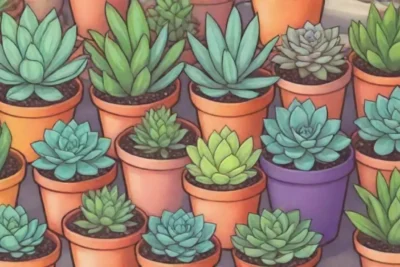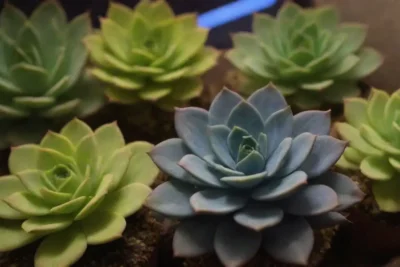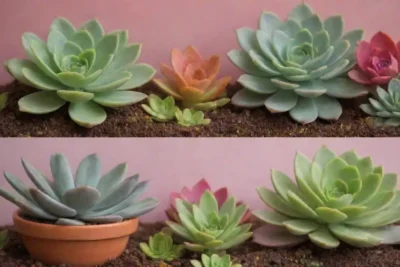
Best Succulent Species for Bright Windows and Limited Sunlight

Introduction
Succulents have become increasingly popular among gardening enthusiasts and homeowners, thanks to their striking appearance and minimal care requirements. These resilient plants are known for their unique ability to store water in their leaves, stems, or roots, enabling them to thrive in a variety of conditions. However, not all succulents are created equal when it comes to light preferences. Some can flourish in bright windows and low light environments, making them perfect companions for your home.
This article will delve into the best succulent species for bright windows that experience limited sunlight, providing you with detailed insights into their care, characteristics, and why they might be the perfect addition to your indoor garden. Whether you're a seasoned plant parent or a beginner, understanding which succulents can thrive in these conditions will empower you to create a beautiful, vibrant space without the fear of overexposure or drought.
Understanding Succulent Light Needs
The light requirements of succulents can vary significantly from species to species. While many succulents prefer bright, direct sunlight, others have adapted to thrive in environments with limited sunlight. Understanding the nuances of succulent light needs is crucial for success when choosing the right plants for your space.
Bright Indirect Light vs. Limited Sunlight
Bright indirect light refers to areas where plants receive ample light without the harsh, direct rays of the sun beating down on them. This kind of lighting can be found in well-lit living rooms or near bright windows that are not in direct path of the sun. Limited sunlight, on the other hand, often occurs in shaded spots, areas with filtered light, or rooms that do not receive much sunlight throughout the day.
Many succulent species are incredibly forgiving and can adapt to either of these lighting conditions, but they may exhibit different growth patterns. For example, succulents in bright light may have more vibrant colors and compact growth, while those in limited sunlight may stretch out, leading to a leggy appearance. Understanding these differences can help you select the best succulents for your specific conditions and maintain their health.
Factors Influencing Growth in Limited Light
In addition to light intensity, several other factors influence the growth of succulents in limited sunlight. Humidity, temperature, and air circulation all play a vital role in a succulent's health and vigor. Most succulents prefer arid conditions and can struggle in humid environments. If your home is particularly humid, you might want to consider placing your succulent near a small fan or ensuring good airflow around the plant to prevent issues such as rot.
Temperature is another critical factor: succulents generally prefer warmer conditions, typically between 60°F and 80°F (15°C to 27°C). When selecting succulents for limited sunlight conditions, it’s also essential to consider the type of potting mix you use. A well-draining soil mix designed for cacti and succulents is crucial to prevent overwatering and ensure proper drainage, even in low-light conditions.
 Top Tips for Positioning Succulents Based on Light Availability
Top Tips for Positioning Succulents Based on Light AvailabilityTop Succulent Species for Bright Windows and Limited Sunlight
Here are some of the best succulent species that can thrive in bright windows and tolerate limited sunlight, each of which brings its unique beauty and characteristics to your home.
1. Echeveria
Echeveria is a diverse genus of succulents known for their stunning rosettes and lush colors. They can adapt well to various lighting conditions, making them ideal for both bright and somewhat shaded areas. Echeveria thrives in bright indirect light but can also tolerate low-light conditions, and their ability to withstand slight neglect makes them perfect for busy homeowners.
These succulents come in various shades, including greens, blues, and purples, and can often show off intricate edges or vibrant blooms during their flowering season. Echeveria can be easily propagated from leaves or offsets, allowing you to expand your succulent collection without much effort. Ensuring they have well-draining soil and watering them only when the soil is dry to the touch will promote healthy growth, making Echeveria a low-maintenance yet vibrant addition to your indoor garden.
2. Haworthia
Haworthia is another excellent choice for bright windows that experience limited sunlight. These charming succulents come in an array of textures and shapes, featuring geometric leaf patterns that catch the eye. Haworthia does exceptionally well in indirect light, and its thick, fleshy leaves can tolerate low-light conditions where other succulents might struggle.
Haworthias often require less frequent watering compared to other succulents, making them great for those who might forget to tend to their plants regularly. Additionally, they can thrive in smaller pots, making them an ideal choice for office desks or tight spaces. Just ensure that they are planted in well-draining cactus soil, and you'll see them flourish even in less-than-ideal lighting situations.
3. Jade Plant (Crassula ovata)
Jade plants, with their thick, oval-shaped leaves and sturdy structure, are ideal for both beginners and experienced gardeners alike. These plants can handle direct sunlight but are equally comfortable in bright indoor spaces with limited sunlight. Jade plants, also known as friendship plants, are synonymous with good luck and prosperity in many cultures.
They require minimal care, with watering only once the soil has fully dried out. Jade plants can also grow quite large over time, so be sure to choose a pot that allows for some growth. Additionally, they are known to produce beautiful yellow flower clusters when they mature, adding an extra touch of charm to your succulent collection. Their robust nature makes them a fantastic option for bright windows and areas that may not receive constant sunlight.
 How to Maximize Light Retention in Small Spaces for Succulents
How to Maximize Light Retention in Small Spaces for SucculentsCaring for Succulents in Bright Windows and Limited Sunlight

Successfully growing succulents in bright windows and low-light environments requires understanding their needs and ensuring optimal conditions. Here’s a deeper look into how to care for these succulents.
Watering Practices
One of the foremost concerns for succulent owners is watering practices. Due to their ability to store water, succulents prefer to be on the drier side. Overwatering is a common mistake that can lead to root rot and ultimately kill your precious plants. In bright or indirect light, your succulents may need water more frequently compared to those in low-light conditions. Always check the moisture level by sticking your finger in the soil; if the top inch feels dry, it’s time to water.
During the winter months, many succulents enter a growth dormancy and require even less water. Understanding the life cycle and climate preference for each species can help you adjust your watering schedule accordingly, promoting healthy growth and longevity of your plants.
Soil and Pot Considerations
Utilizing the right soil mix and pot for your succulents can make a significant difference in their health. A well-draining potting mix specifically designed for cacti and succulents is highly recommended. This kind of soil not only allows excess water to drain away but also provides the necessary aeration for their roots.
When selecting pots, consider those made of porous materials such as terracotta, which allows for better airflow and moisture evaporation. Avoid plastic pots unless they have adequate drainage holes. Additionally, repotting your succulents every couple of years can prevent soil compaction and ensure they have room for growth, further supporting their health and vitality.
Fertilization and Growth Cycle
While succulents do not require frequent fertilization, providing them with the right nutrients during their growing season can boost their health. During spring and summer, consider using a diluted, water-soluble fertilizer specifically formulated for succulents and cacti. Fertilizing every four to six weeks during this period can help support robust growth.
 Common Indicators of Adequate Light Levels for Succulents
Common Indicators of Adequate Light Levels for SucculentsIn the fall and winter, most succulents enter a dormant state, during which they require little to no fertilizer. Over-fertilizing during this period can cause stress and damage to the plants, so it's vital to adjust your fertilization routine according to the seasons.
Conclusion
Incorporating succulents into your home can be a rewarding and aesthetically pleasing endeavor, especially for those with bright windows and limited sunlight. The Echeveria, Haworthia, and Jade Plant stand out as some of the best succulent species that can thrive under these conditions. Their ability to adapt to varying light levels and their low maintenance requirements make succulents an attractive option for both novice and experienced plant lovers.
Understanding their unique care needs—such as proper watering, ideal soil conditions, and seasonal fertilization—can significantly enhance their health and overall beauty in your indoor space. With careful attention and some nurturing, your succulent collection can flourish, adding life and color to your surroundings. So, perform a little research, select your favorite species, and let your succulent adventure begin! Remember, every plant is unique, and with patience and practice, you'll gain the skills needed to cultivate a thriving indoor garden filled with stunning succulents.
If you want to read more articles similar to Best Succulent Species for Bright Windows and Limited Sunlight, you can visit the Light preferences category.



You Must Read